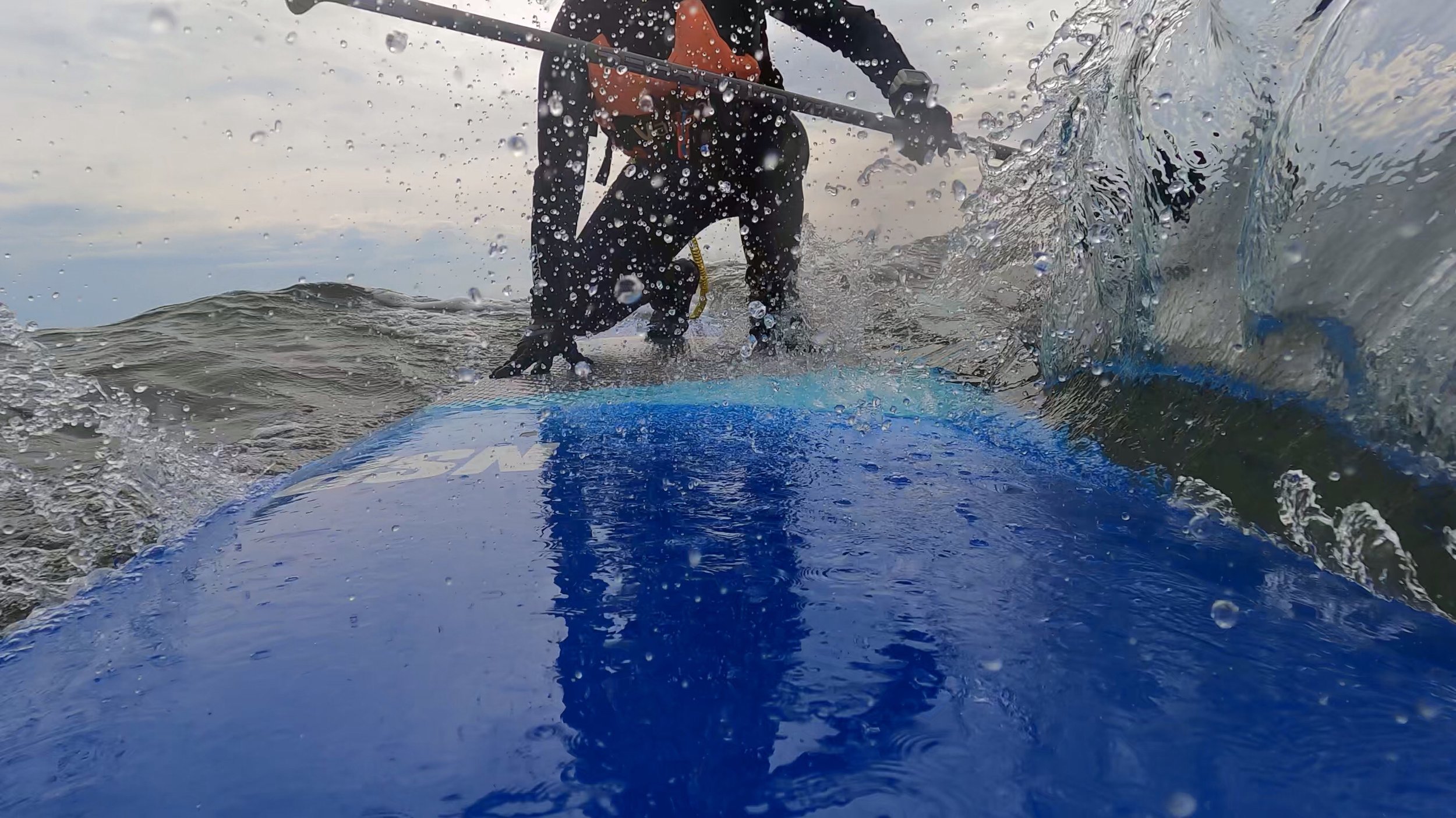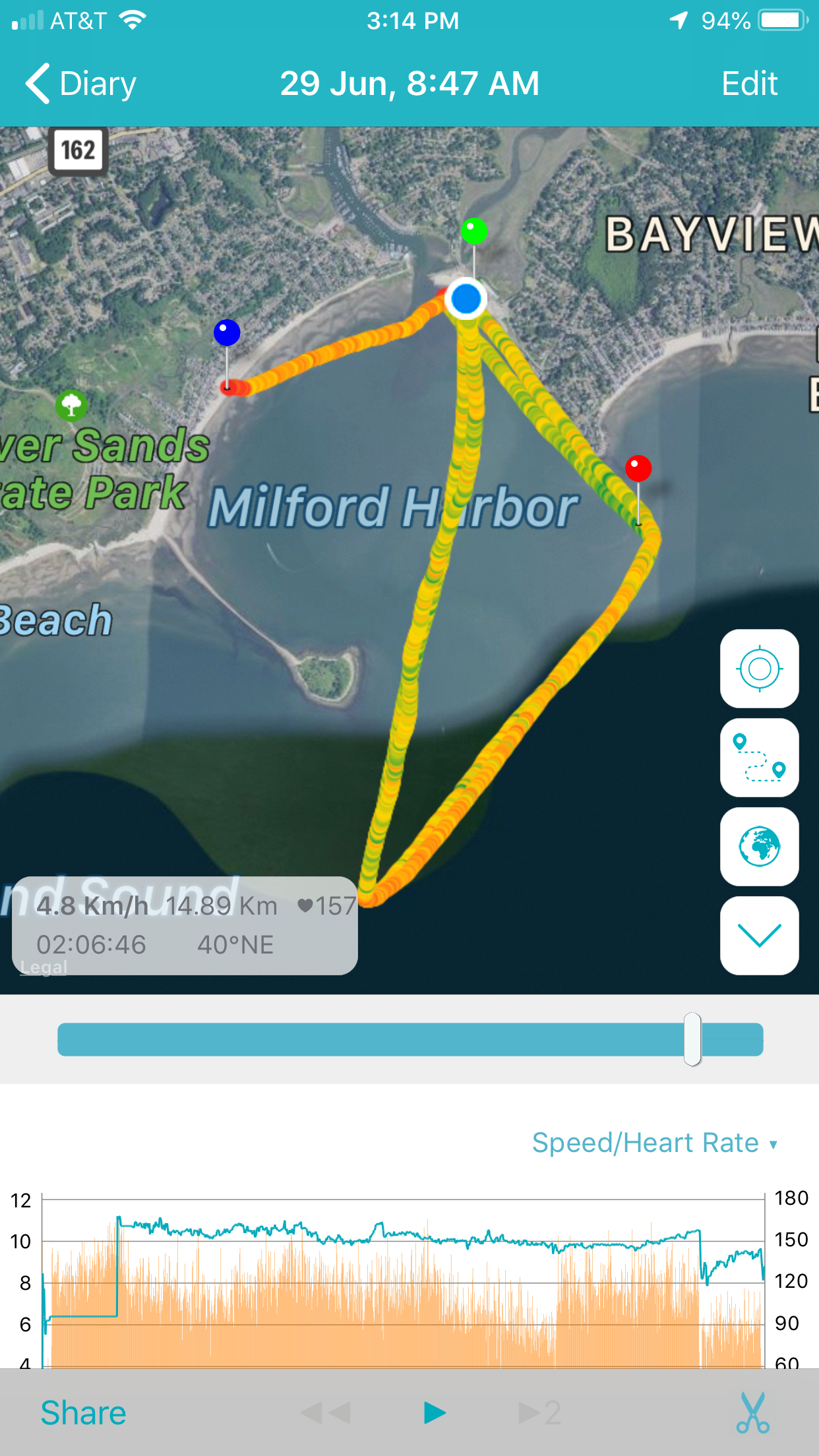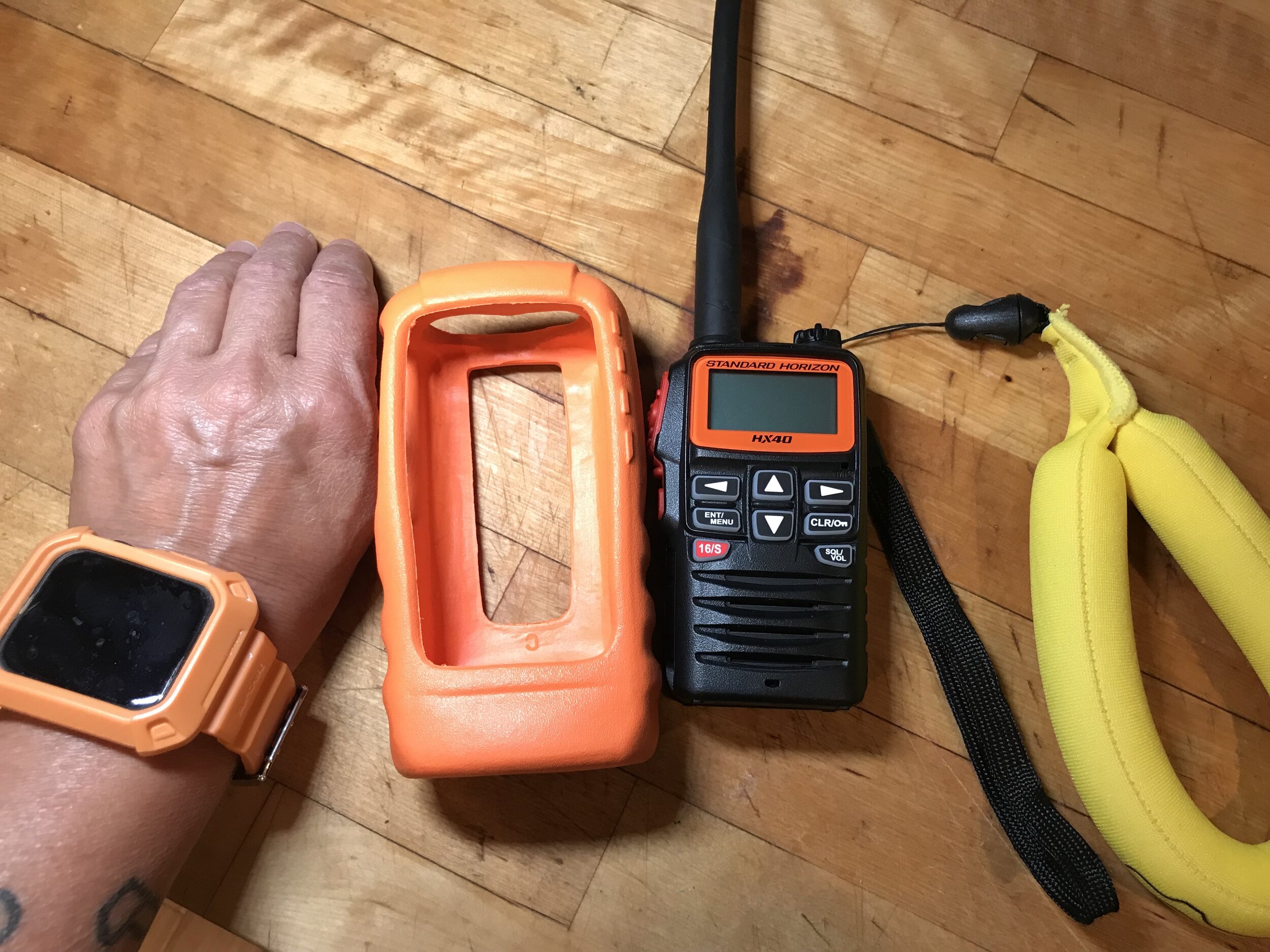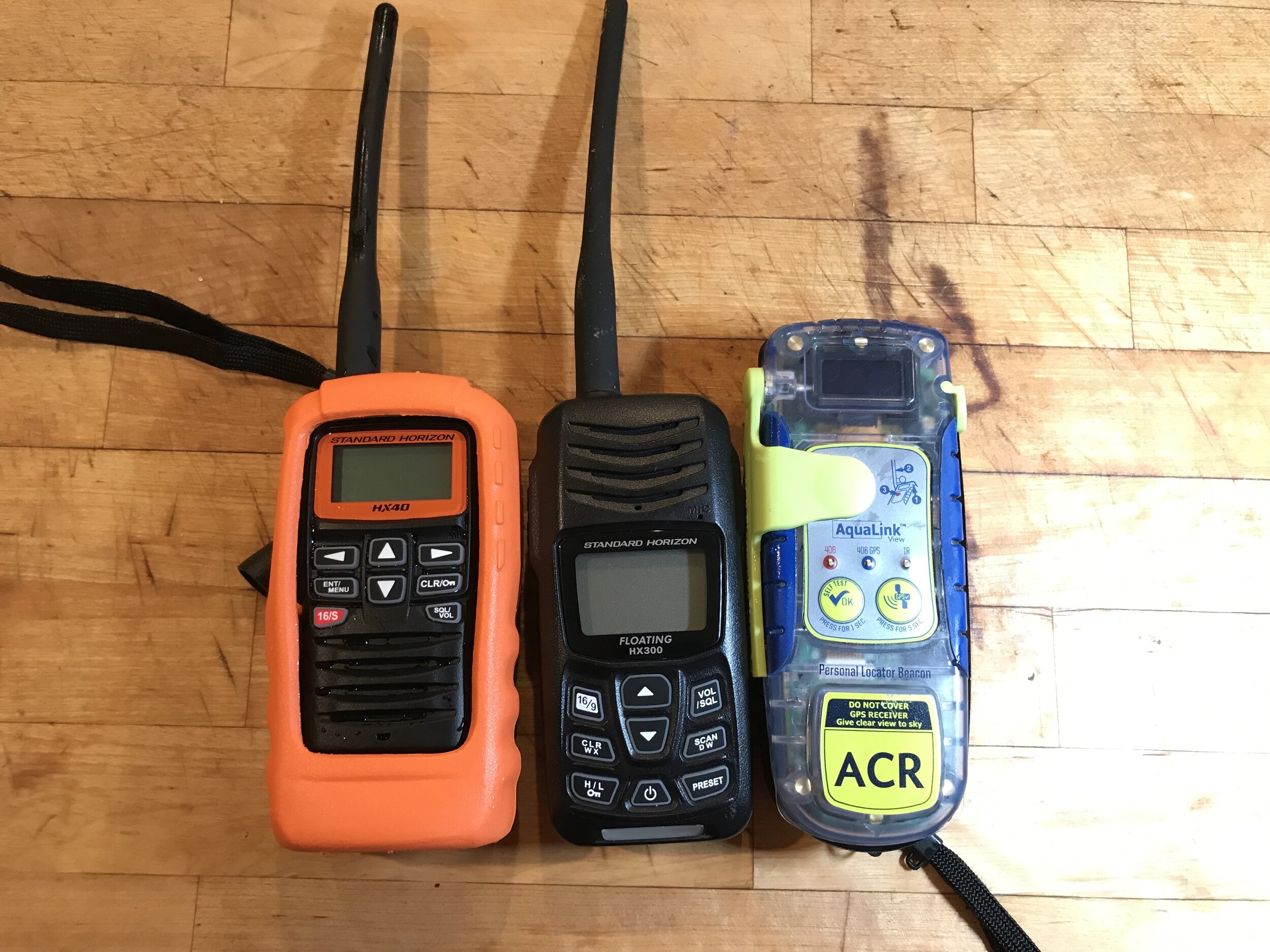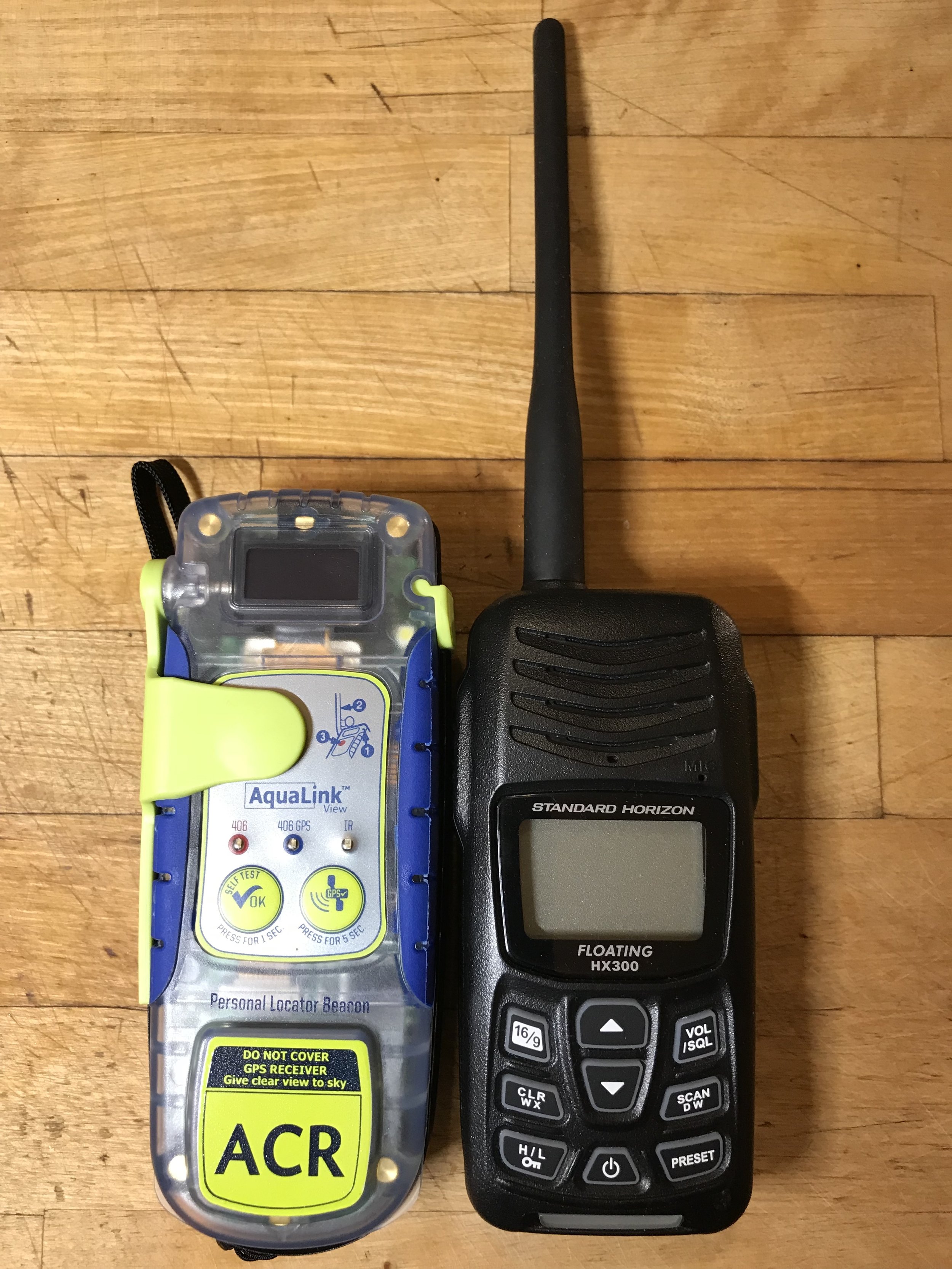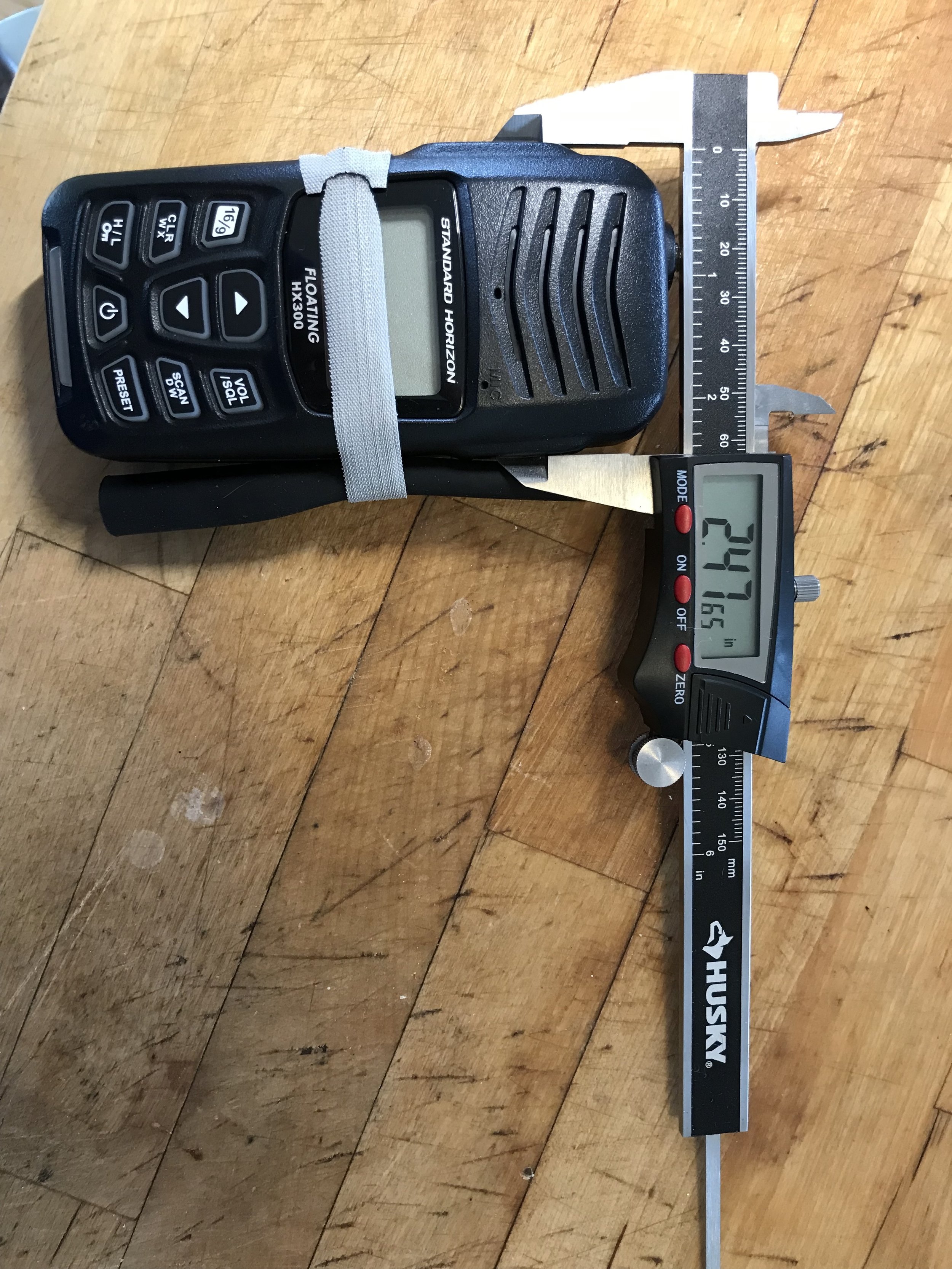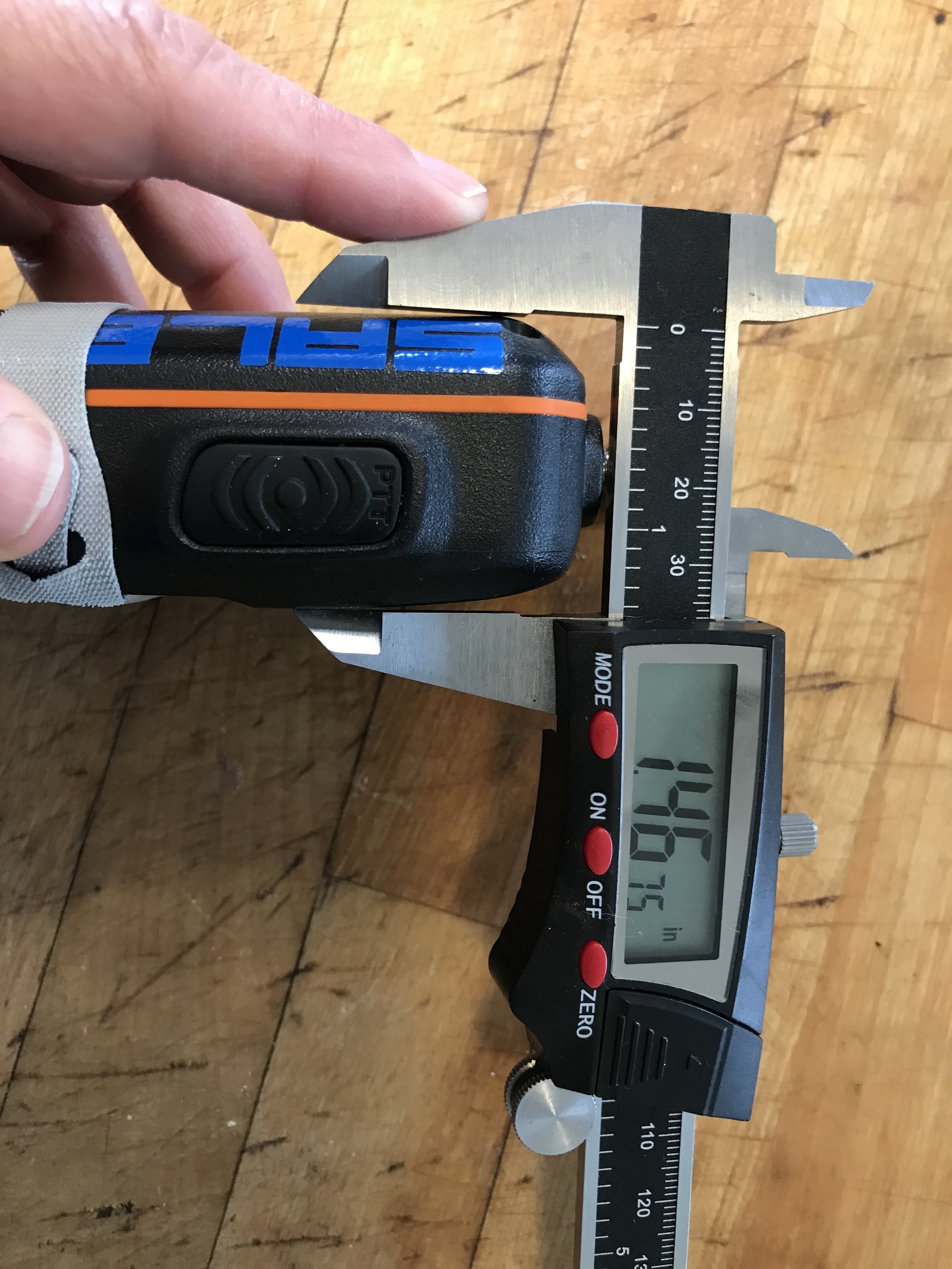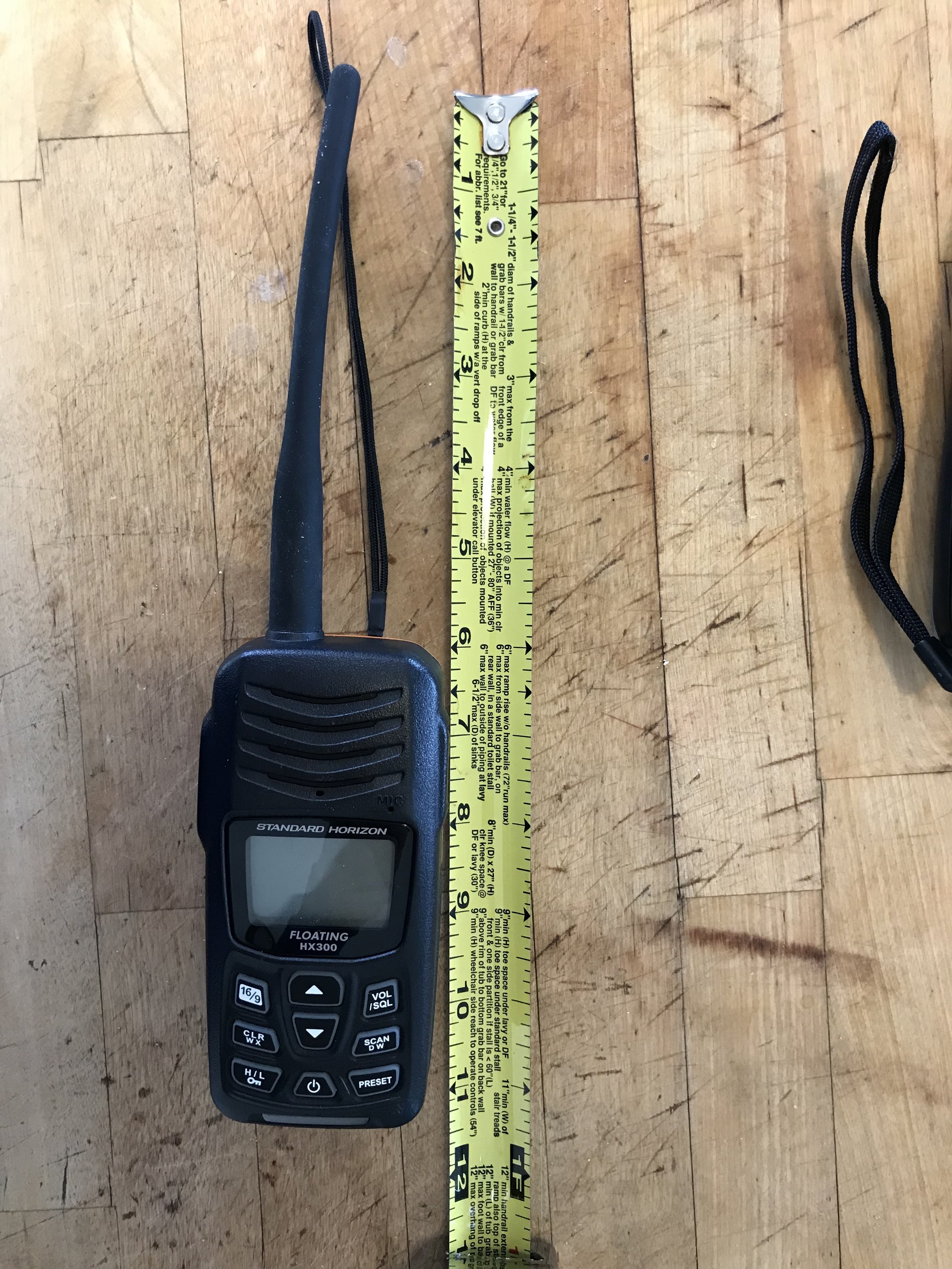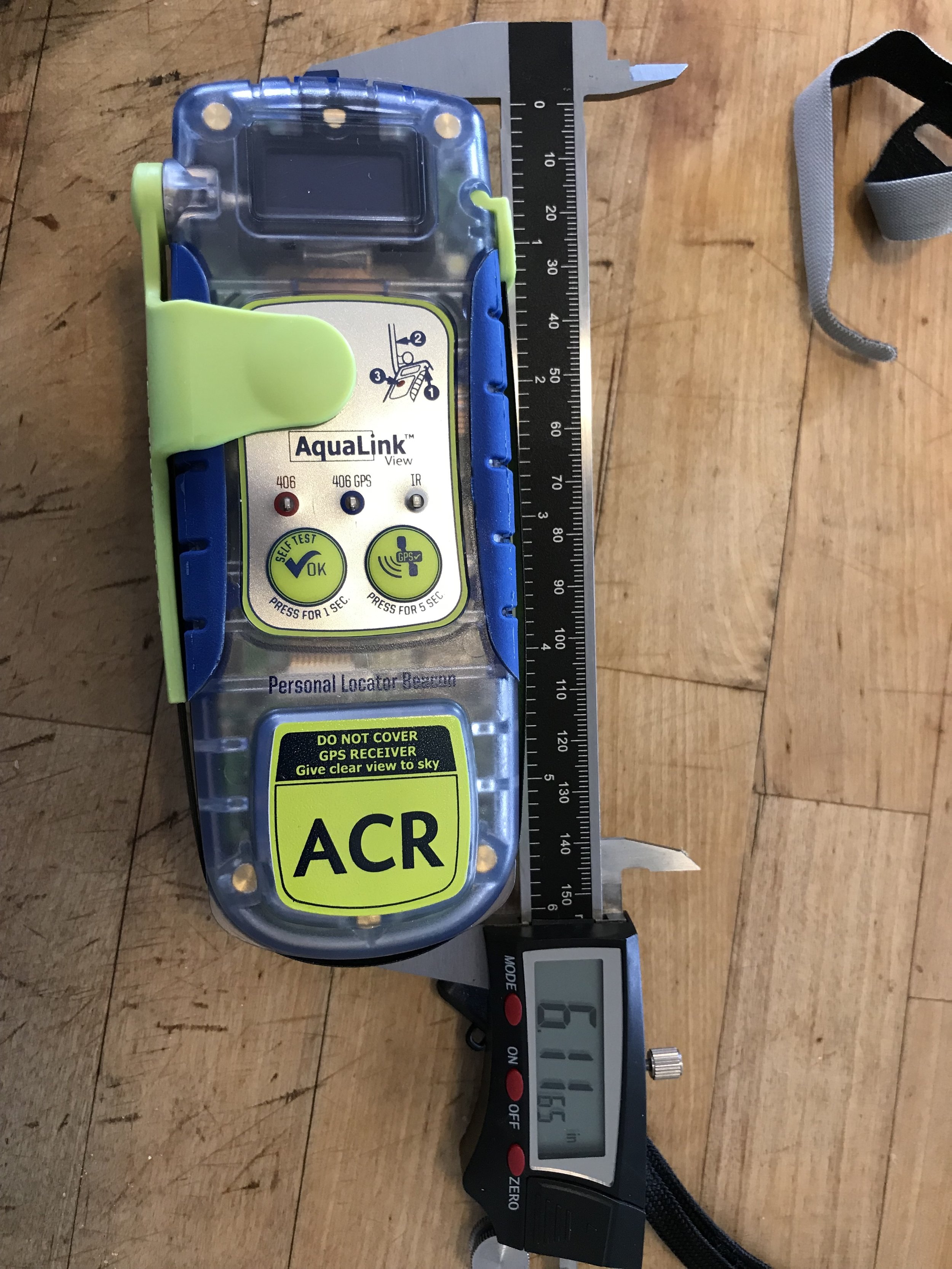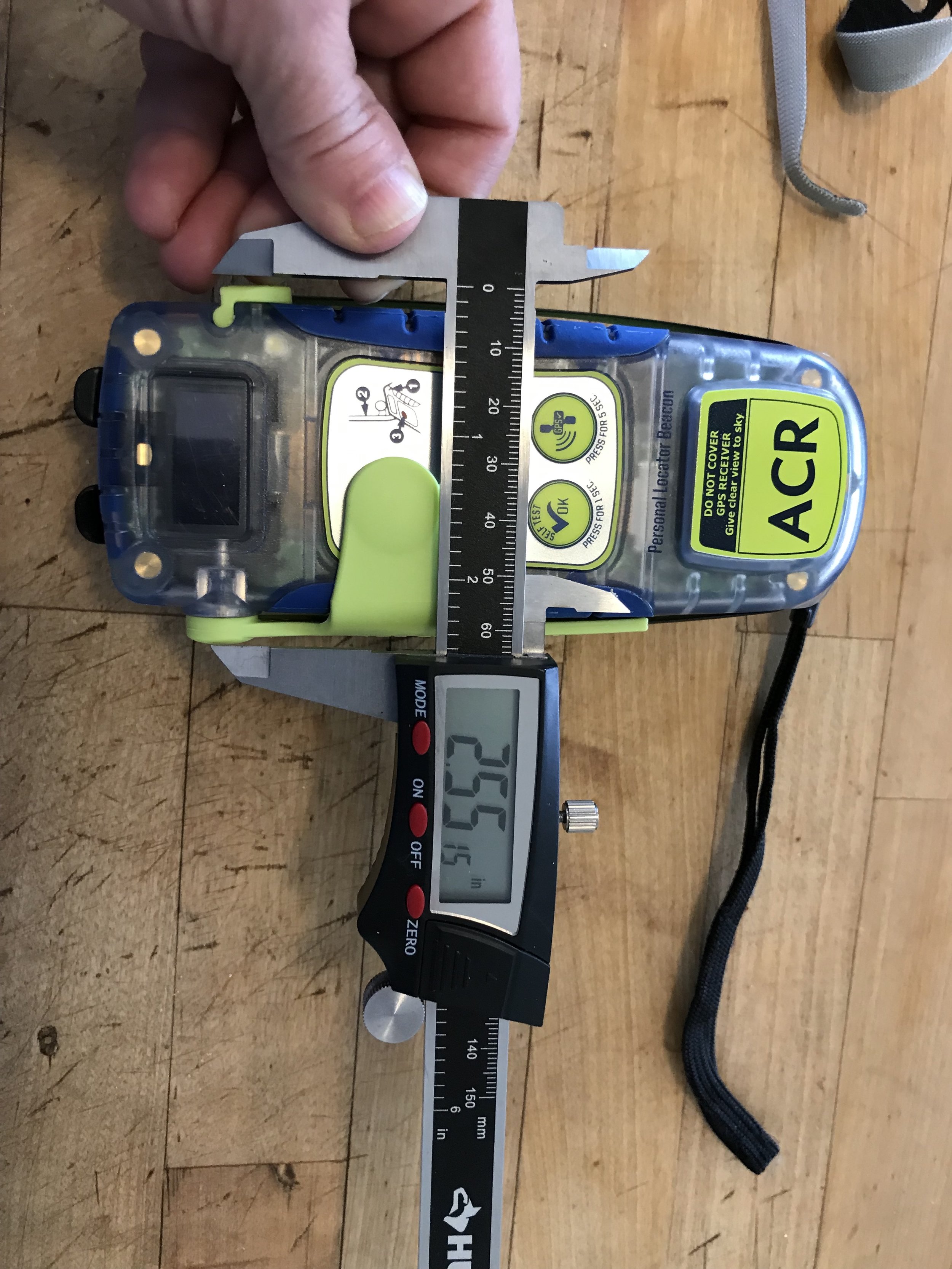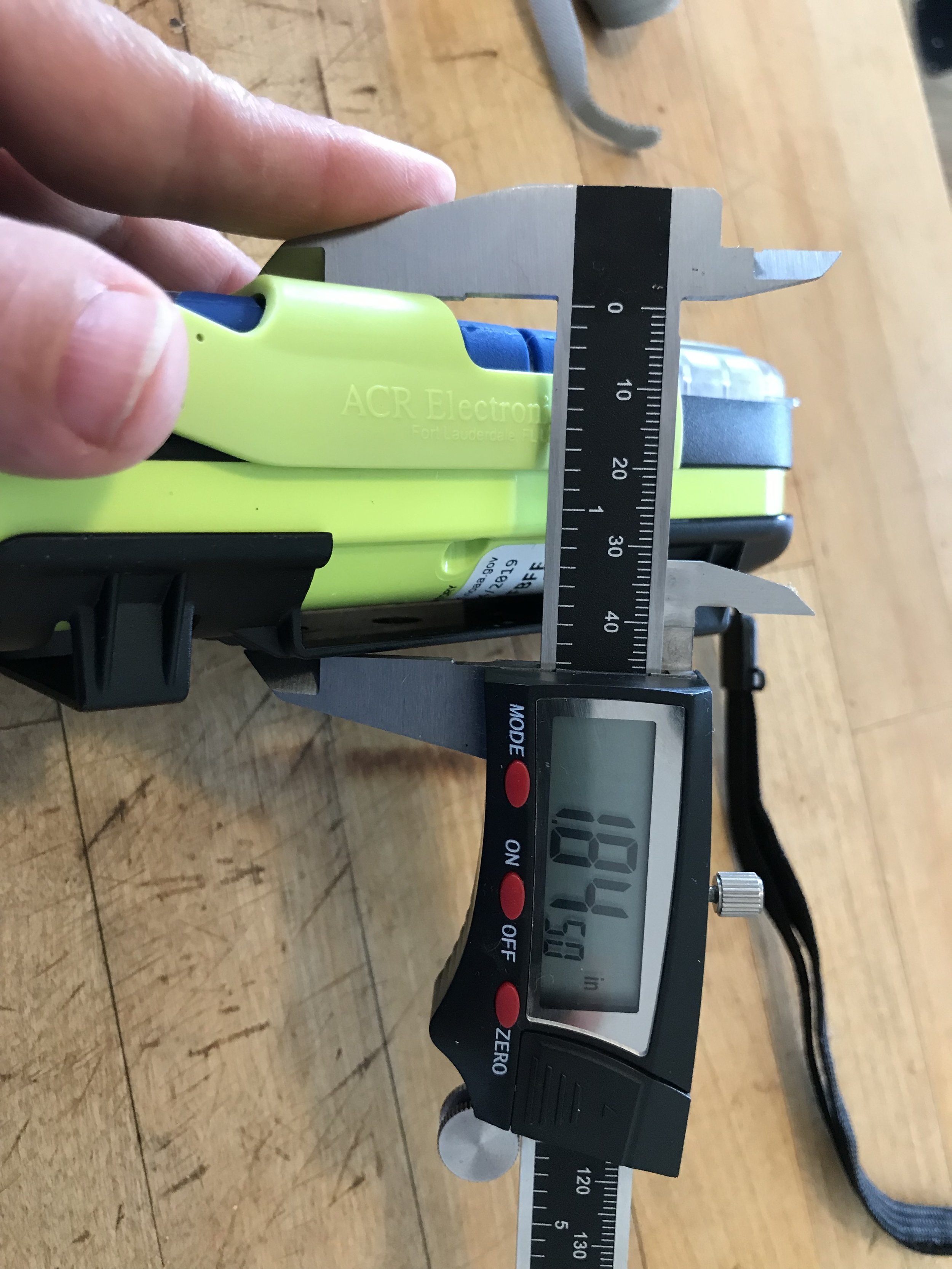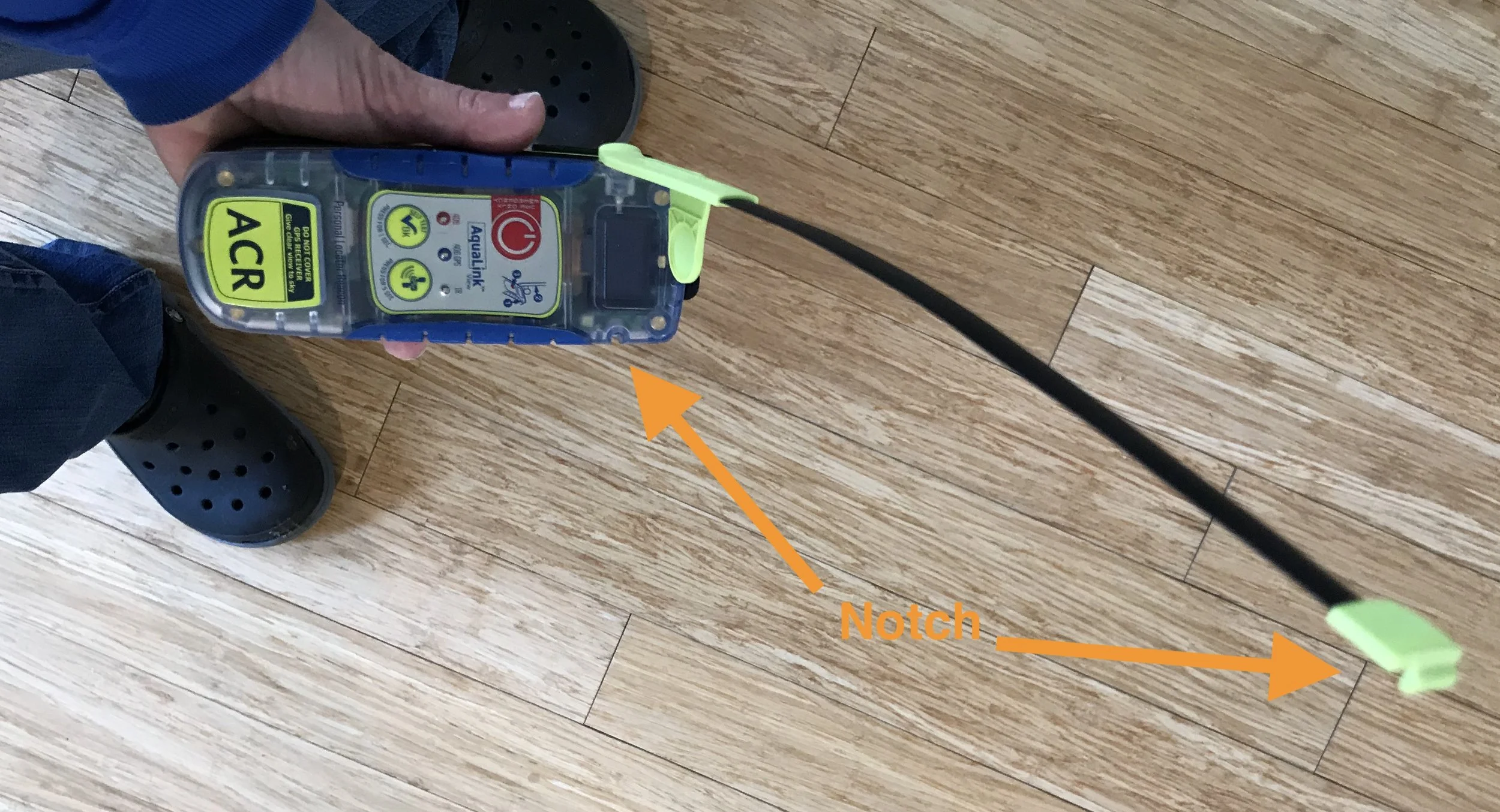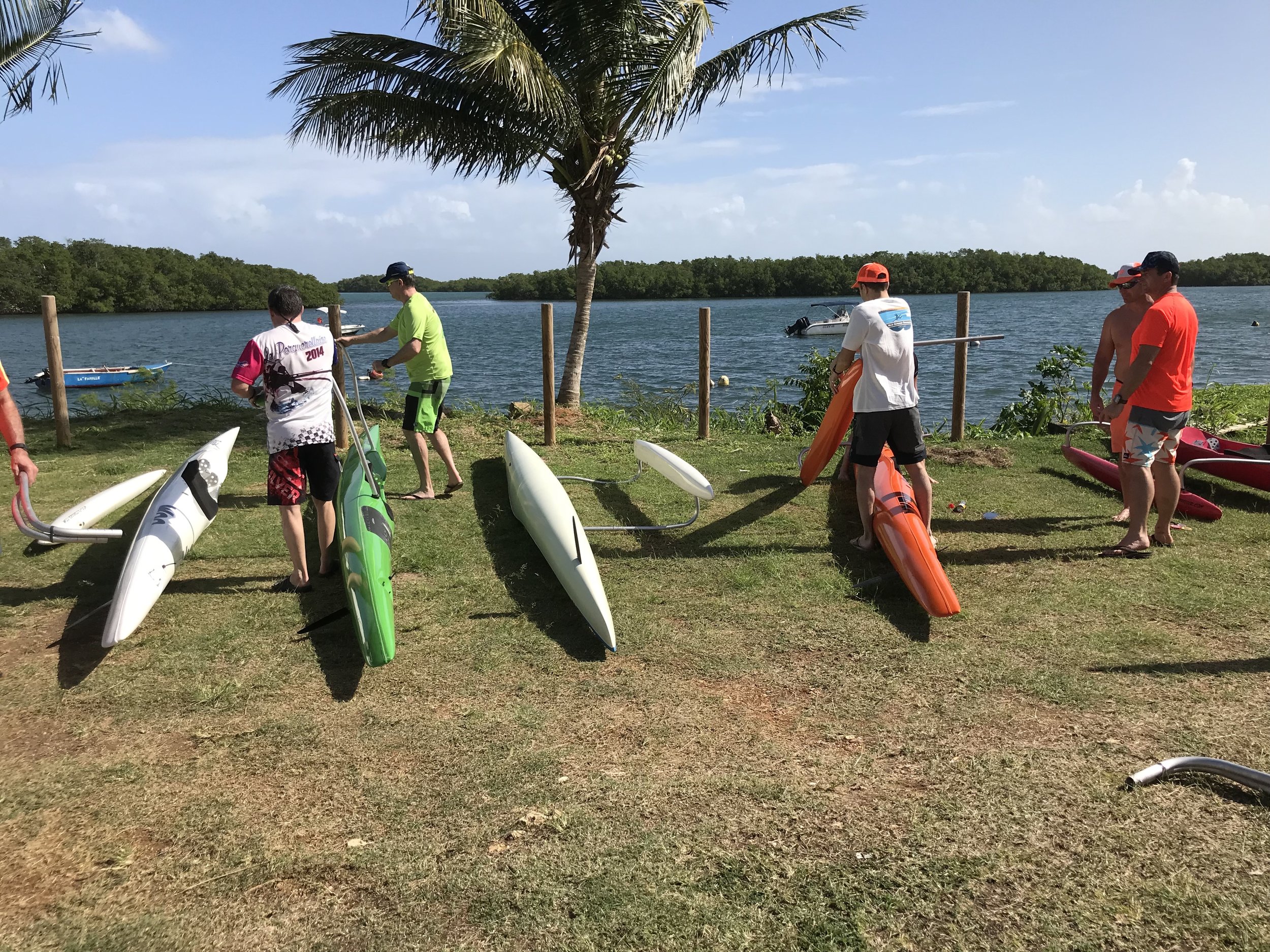Apple Watch Review for Paddlers
I was coming up on logging 200 miles of paddling on an OC1, and with a brand new Kahele replacing my vintage Puakea Kaku, I knew I was not going to improve without the better canoe and hard metrics. It was time for a smartwatch. I had spent the last year using a $12.99 knockoff G-Shock. That could tell me how long I had paddled, and I could get a decent idea of my per Km rate, per mile, what have you. What it also told me is that I could paddle comfortably with a watch. The obvious upgrade was a Garmin, and the stars pointed to the Fenix 5.0, top of the line, etc. What had put me off about the Garmin was that it really isn’t for paddlers. It’s a runners watch. Then a mishap at Woo downwind camp in January 2019 really made me rethink the Garmin. This was in fact a failure of the watch band. Witness this great downwind video, with Adam showing off his style; however there is a subplot. Witness that the video starts with him wearing the Garmin watch, but soon it vanishes, never to be seen again. Adam was able to pinpoint the exact video frames showing the failure of the watch band and the watch dropping into the sea, hardly what you want a GoPro for. Goodbye expensive watch!
So, I put serious time into researching watch bands. Due to the numerous Apple watch bands on the market, this placed the Apple watch onto my radar, which I had never entertained because I don’t know any serious paddlers who use it. More research proved that apps had been developed for the Apple watch that were expressly for paddlers, and when I discovered that the Apple watch 4.0 is virtually a standalone PHONE, I took it seriously. That is, after I did a fair amount of research on sport watch bands and apps. A visit to the Apple store involved some hard questions for the salesperson, who showed me how to put apps on the watch, showed me the Nike sport band - which has a similar quick release button that resulted in the failure of Adam’s Garmin. I was also shown the Walkie-Talkie feature and, most critical, the Phone and SOS features. The salesperson advised me to go to Amazon to look for any number of third party watch bands that would suit my purposes. I bought the Apple watch 7.0 44mm (Nike), and let’s just say I’m thrilled.
UPDATE 2022: I upgraded to the Apple watch 7, GPS/Cellular 45mm. The battery life of the 4.0 was still decent (85%), after very hard daily use and over 1000km a year paddling, but my main interest is in the SOS phone option, so it seemed wise to upgrade. In addition the larger face with an ALWAYS ON option makes a difference, especially on the water where a quick glance at the face is all you have before you get hit with a wave.
I chose the Nike face because I want a bright large screen. You’re stuck with the Nike app (which I don’t use) but you can choose the others. I added Waterspeed, weather and at the bottom a stop watch. Choose whatever face you want. You may want to do this via your iPhone.
SUPcase does not stand for stand up paddling. Anyhow this is what I purchased, a SUPcase watch band for around $23 on Amazon. UPDATE 2022: These cases hold up. I am on my third because they do fade and get dirty. I buy the lighter colors for contrast in the water. I wear it all day long, ocean, yardwork, rough activities - and the Apple watch itself remains pristine. Just wish they had more sport, bright colors!
The Apple watch has excellent water resistance. Please know this is not a review for divers but for people like me, who get wet a lot but do not submerge to any depth unless of course we fall in the waves, where a waterproof band is not required. The Apple watch has high water resistance AND a water lock feature, which you can manually turn on OR your water sport app will turn it on. This feature is built into the two apps I will review, Waterspeed and Paddle Logger. I will go into this water lock feature in a little more detail because I didn’t know about it and thought the app was frozen after I first used it.
Credit goes to iDB for this image and you can read more about how to care for your Apple watch here.
When you swipe up from your home watch face (there are many you can choose from), you get the layout on the left. The water drop icon activates water lock and also makes it so you can’t swipe the screen. When you’re on dry land and you want to deactivate the water lock, turn the digital crown per the directions and some mystery function ejects water. Don’t ask me exactly how this works; suffice it to say my Apple watch spends a lot of time in salt water and everything is good. No need for a waterproof model such as is manufactured for divers for us paddlers. The SUPcase I chose protects the edges and face of the watch as a “bump guard.” Most importantly to me it does not have a little quick release button that could fail, and it has a traditional clasp, so it is easy to take on and off. There are no pins where the band connects to the central section snugging the Apple watch proper. I did add a screen protector film as well. I use a cleaning solution such as I use for my electronics once I get off the water. You have to insert the watch in a sequence and it is next to impossible to push it out when you are wearing it. Many competitor watch bands have some negative reviews for failed pins. This one just doesn’t have them at all.
Waterspeed
My first choice app for paddling
Waterspeed bundles a lot of data into their app. You can choose your water sport and go from there. You are best off going to their site to check out all of the features. (UPDATE 2022: The app is constantly upgraded, so that just when you have everything set on your watch, it goes away and you may have to tweak settings all over again. It is a nuisance to reset the watch to keep the APP face active during use. However, it is still a better app for the price. Go to settings, RETURN TO CLOCK and set it for After 1 Hour. This is the max you can show an app on the watch face, which runs the battery low, so it is not a default.)
I will summarize why this is great for me: as a novice who is transitioning to intermediate paddler I need to know more than just where I paddled, how long and how far. I elected to review my data in kilometers, mostly because my goal is to train for a 50k open ocean race. I now train in the ocean and practice 1 kilometer sprints and various techniques. Later when I review, Waterspeed breaks the data up into 1 kilometer splits. Heart rate data is included as is some basic wind speed data. You can replay the mapping as a video and you can also edit out the pieces that are not relevant. For example if I forget to turn the app off, and it shows my path walking around the beach - that can be removed. I can edit out my time on the water prior to race or sprint start and edit out the end. Etc. I paid for the pro version, which costs about $4 per quarter. You can see some data on your watch, and when you are paddling you can see your actual speed, distance etc. But for analysis, you want to use your iPhone or iPad to see everything on a bigger screen. So, just sync the app’s diary and it will only take a few moments for the data to appear on your other devices.
UPDATE: I’m not a novice paddler anymore. I use the watch for surfski, SUP and SUP surf. In SUP surf I am in the waves a lot, and the watch holds up just fine. I also paddle all season. In the winter I have to wear the watch over my dry suit, which prohibits some of the tracking features, like heart beat.
I don’t think about my Apple watch at all in any conditions. It just works, and especially well in the SUP case.
The scissors are the edit icon. This is a race log. So the slower parts of this log (waiting for the race to start and a slow paddle afterwards), can be edited out and the actual km/hour rate recalculated. Or you can use the slider button and scroll through the visual data, zoom in and even play it back. Lots of data!
This is an overview. Here you see the play button, which allows you to watch the visual log. Here you also see the export button. Not only can you export images you can export DATA as a CSV file. This is really nitty gritty, and I have not needed to use this data just yet. But it’s there.
This is the editing screen with its options.
Let’s take a look at the other app on the Apple Watch market for paddlers, Paddle Logger. A novice friend of mine uses this, and this fits her needs. She basically just wants to see where she has paddled, how long and how far. I tried this then paid to “unlock” the pro features, which turned out not to include and heart data, no splits, etc. This costs about $3 or $4 per month, and when I really could not find improved data, I emailed the developers, who told me it did not have what I was looking for, so I cancelled the subscription.
Let’s get down to what is really awesome about the Apple Watch 4.0: it really is a phone. Granted you must already have an iPhone and using this as a phone will cost you another $10 per month on your data plan. BUT you do not need to carry both at the same time. I have an iPhone 7 plus which is basically a phablet and way too big to carry in my PFD along with my radio and my emergency beacon. Since I always paddle reasonably close to shore in the US, there’s a good chance I can make a call from out on the water if need be. If friends also have Apple watches, we can use the built in Walkie Talkie feature. Then it comes down to the fact that your contacts, music, etc. are all on it. You can ask Siri to start Waterspeed, order a pizza, talk to Mom, text your boss you’re “sick” because there is an awesome swell - whatever you want and expect from an Apple product. I am beyond sold on the Apple watch. The paddling apps will only get better. In closing I’m going to plug the app that I don’t use for a feature that Waterspeed SHOULD have. This is called PIT - paddler in trouble.
Don’t paddle if you can’t make it back to dry land. If you get into trouble, have a plan. PIT might be one of those plans that works for you.
PIT is a function of this app (yet to be released) which allows you to set a timer for the duration of your expected paddle. If you don’t shut it off before the timer counts down, it will ask you if you’re ok and if it gets no response it will text whomever you have set it up to dial. There are other guardian type apps out their that do this as well. This is a GREAT idea. But greater even still is knowing the weather, knowing where you are paddling, paddling with others and ALWAYS inspecting your gear for possible failure (leg leash, my friends) before you head out. As much as I love this feature I will text a buddy I’m going to be out for an hour than end up paddling for three. So, I’m going to do my final wrap up on this by THANKING PADDLE LOGGER for showing me the workaround. This is the built-in SOS function on the Apple watch. So, if you have an app running and your phone is in water lock mode, how do you make an emergency call? You press the lower button and HOLD IT down. An emergency call will be placed. The short video shows how the SOS feature overrides the Waterspeed app (or Paddle Logger or whatever). The long video is me going over my watch. It’s a little long and tedious, but if you’re going to drop $500, worth the time. I did not find any videos on the Apple Watch for paddlers when I looked, and so I write this entry not to sell watches but to make paddling SAFER and spread the good vibes. This watch not only makes me safer, but I have to say I’m already a minute faster per Km from the data feedback. So there you go. Stay safe people. The water is a blast, but the return to the beach is always our goal so that we can do it all over again.
Paddle Board Leashes (and How to Stand Up)
Maiden voyages of NSP Sonic paddle board and VESL prone board with MetaLeash.
Paddle board leashes are essentially the same leash as an outrigger or surfski leash. This means the inexpensive leashes (and even some of the expensive leashes) marketed for boards have most of the same problems as the cheaper leashes on the market: breakage, slippage, UV rot, heaviness, etc. The stand up paddle board (SUP) paddler has some unique issues, mostly having to do with how you fall. When I bought my NSP 24” Sonic surf paddle board, the seller (Vermont Surf and Ski) had hoped to take me out to a river and give me a few lessons near Brattleboro, Vermont, where I had to drive to pick it up. My first thoughts, as a safety geek, were: how deep is the water, how rocky, how fast is the current… But he was limited on his time as NSP boards were in hot demand that day. He bought four MetaLeashes and told me if I fall off my board, to basically dive sideways so I don’t come down on it and crush the carbon hull with the paddle. Obviously, other crushable things are bones… Luckily when I took the board out on my maiden voyage, I ran into this fellow, below, who got me standing up in five minutes.
Most people would not buy a race board before getting cozy on a wider, shorter board first. As an experienced ocean outrigger paddler, my comfort level was high enough to bypass entry level boards. The price was right on this used board, which only had a couple of dings I had to repair. Compared to my outrigger canoe, the NSP Sonic looks really wide, but I am in a sitting position with a low center of gravity in the canoe. Shifting that weight upwards was going to be a challenge. This is how we met that challenge: my stand up coach stood at the back of the board and basically used his hands to steady me. He told me to get into a crouched position and start paddling. So, he walked behind me, and after a minute he told me to come up on one foot and (KEY PART HERE) WHILE TAKING A STROKE come up on the other foot into a standing position. Just like that, I was standing. Let’s cover this again: crouch on your knees, come up on one foot, stick blade in water, stroke, come up to standing position with the other foot.
Aha! A brace stroke! What is a brace stroke you ask? There are variations on it, but basically when you see a paddle board surfer leaning on a wave, on the paddle, they are bracing the paddle. When you see someone flying the ama on an outrigger, they are bracing the paddle. And I am lucky that Oscar Chalupsky taught me the brace stroke for surfski, which is the most important one: the one that keeps you from rolling over. In this case, standing up on a paddle board, the board is more stable because you have the paddle blade planted in the water, momentarily “locking” you into a stable position just like a rudder does, while you mess with gravity.
The fellow continued to hold the rear of the board while I stood and paddled (my legs shaking like mad), and I really have no idea when he let go. So, try this with a friend or family member, and make sure they don’t tell you when you’re on your own. The psychology of BELIEVING someone was stabilizing me, even if they were not, meant my brain could not tell the difference between him being there and when he let go. In fact he made it a point to let me know he would not tell me when he was not holding the board. So, I got my first “downwind” paddle on the Sonic my first day out. And in all subsequent paddles, I did not fall off.
Back to leashes. What happens when I do fall? It is more dramatic than a fall off an outrigger or surfki, where you mostly just roll into the water. Your bouyancy is such that you usually don’t go under. Not a lot of countering forces here. But a plunge? You really don’t want to smack the board, with hands, legs, head… And when you do leap sideways, you will submerge further, which means there will be more stress on the leash.
The first thing I noticed while on my knees on the paddle board, was the cuff of my leash. You have to position the cuff so the attachment to the leash is on the back of the leg, otherwise you will squat on the hardware. Issue number one solved, just position the hardware to the back of your leg. But there are other solutions. I have seen a lot of social media images of stand up paddle board paddlers preferring to connect the leash at the waist. While I do make a belt, on my first day out I just connected my leg cuff to my PFD, similar to what I’ve seen others do. I have been selling more and more of the belts lately, so it is worth considering what is comfortable for you. Link to MetaLeash shop: www.metaleash.com.
A note about prone paddling, foil, surf: the MetaLeash also works well for prone, or for any other board activity like foil. A surf leash is in development with a different set of fall parameters, because falling off a surfboard involves very complex forces, similar to paddle board surfing, with a lot of fancy footwork, and surfers prefer straight leashes. Stay tuned or hit me up with suggestions, comments, feedback, concerns, customizations, you name it, I will leash it for you. metaleash@gmail.com
And now for a video of some truly amatuer standup paddle board surfing and some speedy prone paddling. Here we ended up sharing a leash, another upside of a quick release, which is critical for getting out of trouble, possibly critical for a race start or critical if you are sharing! Have fun and stay safe. It is February 28, 2021, 39 degrees F in my local Atlantic Ocean, and that is paddling weather to me. See you on the water!
LIGHTER: at 4.5 ounces weighs half of other leashes, floats
SMALLER: 50% smaller than other leashes but still extends just as long
STRONGER: heavy duty webbing, stitching and YKK buckle system, 1600lb jacketed Samson Dyneema retractable leash, stainless steel clasp system (no hidden mystery hardware or plasticware like other leashes). Can be used with included Dyneema loops, without hardware, for greatest strength.
SAFER: easy to inspect, high contrast (red, orange, hot pink, lime, yellow or black cuff), red, yellow, orange or pink leash, dual quick release/connect for either race start or getting out of tricky situations
SIZING FOR OUTRIGGER, SUP, SURFSKI, FOIL, PRONE: Retractable leash comes in 9’ or 6’ length. Hardware comes in different sizes for conditions or hands.
SIZING FOR FIT ABOVE CALF: Leash cuff is to be worn above the calf or connected to waist strap.
Straight Leash 6’ with Shock Coil and Quick Release (for surf, SUP, foil, your choice!) Comes with yellow or orange rail saver.
Dry Suits: Top Picks for Winter Paddling Gear, a review of Kokatat, NRS and Vaikobi
The ocean as winter wonderland.
I have been researching dry suits for the past two years. Each winter I have opted to spend money on travelling to the tropics instead, usually to downwind camp. This winter, as I stay at home due to the corona virus, I decided it was time to take the polar bear plunge and invest in gear good enough to carry me through a long, socially distant winter, in my local ocean. I do not make the decision lightly, as paddling in cold water drastically increases risk in our sport.
Every time I thought I was heading toward a bona fide review of winter paddling gear, I ended up on one of those websites that is really a shopping channel. After reading every seemingly real paddler’s review on storefront websites and watching the few videos out there, I really had my heart set on a Stohlquist with a built in jacket. Alas, there wasn’t one in my size available anywhere. Inventory is also scarce in this winter of 2020, and there seem to be a lot of newer brands out there I am not familiar with. As much as I looked and looked, I also was not able to find a high-visibility, preferably orange or partially orange suit in my size. Ultimately I defaulted to a color that really is not a good idea in winter water gear - blue - because it was one of the only ones out there in my size and made by the brand I finally decided was my top choice, even beyond Stohlquist. And though I did not prefer blue, the body of the suit is light colored, which is a lot better than black. But it is still sandy colored, so it would be impossible for a rescuer to pick you out of the waves or off the shore in bad conditions.
Kokatat.
UPDATE: Winter of 2022 approaches, which will be winter three in the dry suit. Not only has it held up with frequent winter use (December-April), I also took up SUP surf last winter. This means I submerge every time I go out, as a wipe out in surf is generally guaranteed. The great upshot of the dry suit investment is that the ocean sports do not come to a seasonal end. My fitness level remains high all year round.
I finally rejected the idea of a drysuit with built in jacket, because I can always add layers. I knew that for the freedom to move fully, to rotate through all of my paddling motions, less was going to be more. Stohlquist does not offer a lifetime warranty and Kokatat does. Kokatat also has nice videos on how to maintain and repair your dry suit. The price point on the one I selected was $620 USD and is a Hydrus Swift Entry. When it takes just as long to gear up as you plan to spend on the water, putting gear on can be a bummer. Believe me, it takes longer to put my NRS winter gloves on that it takes to get the Swift Entry suit on. You will be in and out of this in a jiffy.
When I first tried it on, the choking tightness of the latex neck was terrifying. After some internet research, I discovered that Kokatat recommends you just put up with it for your first few paddles. I couldn’t wear it for three minutes let alone three hours, so I defaulted to their other suggestion, which is to use cans to stretch the gaskets in the neck and wrist for 12 hours. I did not need to stretch the wrists, and after an overnight of stretching the neck around a small paint can, the difference was just enough to make the first paddle tolerable. After a few more paddles, the latex remains ever so slightly uncomfortable when I first put it on, then I don’t notice it. TIP: measure your neck then make sure whatever you use to stretch the gasket is a little smaller than your neck, so that you don’t overstretch.
There are considerably more expensive drysuits out there, but as a novice winter gear consumer with a fairly advanced understanding of how much I paddle, under what conditions and also a commitment to taking care of my gear, I figured I would get enough wear and tear out of an entry level priced Kokatat and know enough in 2023-2024 to upgrade if required. But since this suit is repairable, even that may not come into play. But let’s say I wear it 100 times over the next three seasons: that come out to $6.20 per use, which is a far cry from a $620 single use plane ticket to the tropics. Ok, so the reality is, I will use any math to justify my paddling addiction. But in reality that $6.20 is my ticket to a safe paddling in an ocean that would otherwise kill me. Almost every winter someone goes out in my local ocean in blue jeans on a kayak and doesn’t come back. A dry suit is an investment in your life. Never second guess the temperatures. If getting too hot is your worst case scenario (because you literally are sealed inside the suit) then you’re in luck.
The Kokatat Hydrus performs very well while paddling, as it does submerged in water. This suit has built in feet or socks. For me, the key to staying warm is keeping my extremities dry. You will find that air gets trapped in the suit. I realized after a couple of uses I could open up the easy access zipper and bleed out the air, then rezip. I bought “waterproof” socks, which have about a 1mm fleecy neoprene texture and outer seal of some sort. They look like socks and feel like thick socks. Of course you don’t need waterproof socks inside a drysuit, but for me these socks are gear and are not bulky like full neoprene socks. The ones I bought are no-name “Randy Sun” socks I bought on Amazon.
UNDERLAYERS: Look like socks. Feel like thick, cozy socks but waterproof or at least water resistant. Along with Vaikobi cold gear and an NRS hydroskin top.
These are my underlayers: I don’t plan on swimming with these socks, but I can say that after getting out of my drysuit I can walk through puddles into my house and no water is absorbed by the socks. $24-$29 USD. As I already have a hard time with the ankle zippers on my NRS farmer John wetsuit, I figured I needed tapering gear to get into my winter paddle boots, so I bought Vaikobi Vcold Flex tights. My legs don’t tend to get cold, and inside the watertight and airtight drysuit, I don’t think I will need thicker neoprene this winter. These tights are a light neoprene like material with fleece and have the uni-rear end to keep you from chafing on seams. They are pretty much the same thickness and softness as the no-name socks. The NRS hydroskin top has lasted me many seasons and still looks brand new.
OUTER GEAR:: I selected NRS Boundary boots and ordered a size up so I could fit my socks and excess drysuit socks (they run puffy big) into them. These boots are waterproof up to the ankle. It is impossible for me not to get water into them, so when I was done and portaging my Kahale across the beach, I was not happy with the water sloshing inside. Water runs out of regular NRS paddle boots, so no sloshing. But before I discounted them entirely, I decided to try them with my NRS farmer john wetsuit on a warmer day. Water still gets in over the top, but once your body warms up that water, that is the water that stays in your boot. With regular, ankle high paddling boots, cold water is constantly exchanging. So, ultimately, the boundary boot offers a significant advantage in keeping the extremities from getting too cold. Since they are mostly neoprene, they are very flexible and do not get in the way of my leg pushes, which is a major factor in paddling power. I love them. $80-$100 USD.
I have owned the NRS Mavericks for a few years, and my first pair has taken on some small holes. The latest versions are thicker or tougher and were very difficult to get on. But this I suspect is part of their newness. I had never experienced them as waterproof. My hands always seem wet. But once the new liquid seam wrists were sealed over the latex gaskets in my Kokatat dry suit sleeves, my hands were indeed dry. The dampness I felt afterwards is the dampness you will feel from paddling in your drysuit: from sweat. As for headgear, I have a neoprene beanie that always rides up, so I don’t use it anymore. I’m sure I will need a full hood at some point this winter, but for now a skimask will be topped by my neon orange Puakea trucker hat. I would still prefer an orange suit, but I’m staying hi-visability with my neon orange PFDs (Vaikobi for now, my more buoyant and thicker Mocke for the cooler winter), and I have switched to my MetaLeash belt. The MetaLeash cuff still easily fits around a drysuit, but the higher the quick-release is, the less you will have to submerge in cold water if you get into trouble.
Your smartch watch will not pick up your heart rate through the neoprene.
My Apple watch still connects to GPS and gives me my paddling app features, but without heart rate. You can’t have everything! And you can’t use the touch screen etc. But the upshot is, with the right investment, you can paddle all winter long. Please remember to study the weather and do not go out if there is risk. I can comfortably carry my compact Standard Horizon radio and my bulky ACR beacon in my Vaikobi race PFD. I hope I never use them! Be safe and see you on the water,
FASTEN YOUR METABELT!
Introducing the 2024 MetaLeash Belt Leash, perfect for surf, SUP, and all paddle sports. Our upgraded design features bold, brightly colored belts that are two ounces lighter yet just as strong, with a 2800 lbs breaking force. Made of durable seatbelt polyester, the new MetaLeash belt ensures top performance and reliability.
PLEASE NOTE: Belt selection is yellow, lime, pink, orange, red or blue with three large water drops. The small water drop designs are SOLD OUT. We appreciate your patience while we update the inventory photos. The leash colors remain the same.
Leg Leashes!
Generic leg leash worn loosely around the ankle. Too loosely.
In January 2019 I had a leg leash fail on me in big water. It was a short leash, like the length made for surfski. Trying to move around a 21’ canoe I did not have enough length to maneuver, and the tension pulled the leash off my leg. It shot off like a giant rubber band. In that instant I witnessed how quickly a technical failure could lead to dire circumstances in the ocean. I knew if my canoe and I separated by one meter the wind could take it away. I would not be able to swim to catch it on its westward journey perhaps a thousand miles to the next land. I also would not be able to swim to the beach. I could see the beach. It was upwind from me. I raised my paddle to alert the other paddlers in my group I had a problem. I waited until they were close enough so if I lost contact with the canoe they were right there to help. We got the canoe back over. The last kilometer I paddled then to our destination was the longest ever mentally for me. Why? Two days earlier I had learned of a drowning death of a paddler in my circle. Someone who should have been paddling with us.
When I stepped onto the beach my goal as a paddler had shifted: to stay alive. As long as we are alive, we can paddle. One cubic meter of water weighs around a ton. We will never be stronger. We have to be smarter. We have to be wise. When in doubt about the conditions, just don’t paddle. The ocean will be there tomorrow, and we should be too.
That night at the villa, I pondered two problems: (1) how to resolve the leash wrapping around the hull that makes us outrigger paddlers take a leash off after a huli and (2) resolve the loose, slippery cuff problem.
105 days later my downwind coach Guy Ringrave was separated from his OC1 in big water in southwest France, and he also drowned.
It is at once horrifying and unacceptable to see my friends lose their lives paddling in the oceans we love. We must change our culture and include safety training as invaluable.
I had not feared drowning because it had not been real to me. I started my season this year by using a rope I trusted as my leash. I sewed webbing by hand. I stopped using the cheap leashes for good. I don’t know how Guy was separated from his canoe, but there are only so many scenarios. I just can’t believe he’s gone. This should never happen to any of us. Guy’s family posted through Woo that they would continue his outrigger business in his spirit.
in this spirit I continue to paddle with the deepest respect for the ocean and wind. I want to make this increasingly popular sport safer for all.
And finally I found someone who could help take my rope (Dyneema) and jacket it into a retractable cord. I’ve spent months agonizing over details to make a superior leash. It is not meant to save your life. It is made to keep you with your boat, which is a flotation device that at all times is functioning to keep you alive while you enjoy the wonders of our water world. Pay attention to the weather report and always keep communication on your person. Don’t attach it to your boat.
I present to you the Meta Leash. It is smaller, lighter and stronger than any other leash on the market. It has continuous engineered strength and is stronger than steel, outlasting it in a marine environment 3:1. It’s core is Dyneema, jacketed in rubber (1600 pound, 730 kg average strength). It fits better above the calf and can also be worn at the waist. It is superior in every way to any other leash. The second video shows you how to recover from a huli WITHOUT having to remove the leash.
The Meta Leash is for sale on my website shop. If you have any custom needs or concerns, email me.
LIGHTER: at 4.5 ounces weighs half of other leashes, floats
SMALLER: 50% smaller than other leashes but still extends just as long
STRONGER: heavy duty webbing, stitching and YKK buckle system, 1600lb jacketed Samson Dyneema retractable leash, stainless steel clasp system (no hidden mystery hardware or plasticware like other leashes). Can be used with included Dyneema loops, without hardware, for greatest strength.
SAFER: easy to inspect, high contrast (red, orange, hot pink, lime, yellow or black cuff), red, yellow, orange or pink leash, dual quick release/connect for either race start or getting out of tricky situations
SIZING FOR OUTRIGGER, SUP, SURFSKI, FOIL, PRONE: Retractable leash comes in 9’ or 6’ length. Hardware comes in different sizes for conditions or hands.
SIZING FOR FIT ABOVE CALF: Leash cuff is to be worn above the calf or connected to waist strap.
Marine Communication Safety: a review of the Standard Horizon HX300 VHF radio, HX40 VHF radio and ACR Personal Locator Beacon PLB-350C
UPDATED! November 2019.
Skip the bulky case and attach the HX40 to your PFD or maybe even a floaty, as pictured. You can see it’s barely twice the size of my Apple watch.
In the optional floating orange case, the HX40 is a little bigger than the HX300.
Due to the failure of my HX300, I am updating this entry. I had really liked the USB charging port, but this summer the latch over the port started opening. I got back from a surf session and found the port stuck open, and the light that comes on in the unit when it gets wet was on and blinking. I could not turn it on or off. I removed the battery and tried drying everything in a closed container with Superdry calcium chloride desiccant, but the electronics only partially came back to life. Since I won’t paddle without a radio, I headed to West Marine and bought the new, compact HX40. The HX40 is much smaller due to the fact the built-in flotation of the HX300 has been removed. I bought the optional floating case online, but it proved to be really bulky. Since I connect the radio to my PFD, I think that’s enough flotation for it. The HX40 is pared down. Just turn it on, hit the button for channel 16 and call for “Mayday” if you’re in trouble.
I tested it with my club radios then had it turned on to see if I got any Coast Guard chatter in Long Island Sound. Sure enough, I actually overheard the Coast Guard responding to a vessel in distress. Wow, that was a first time for me. I opened my eyes a little wider just in case I saw anyone in distress, but I did not. The Coast Guard repeatedly called back, without success, for the location of the vessel and number of people on it. I do not know the outcome of this episode, but it really taught me they are there and listening. If you are reading this and in another country, please comment on who patrols your waters and how we reach them by VHF.
While the radio dried and I researched the HX40, I discovered my HX300 had a 3 year warranty. As it was only two years old, off to the manufacturer it went. It was supposed to take 7-10 days for repair, but eventually it just sort of disappeared and no one picked up the phone or answered any more emails. After giving Standard Horizon an email ultimatum, I suddenly got a Fedex tracking number with no other correspondence, and a few days later a brand new HX300 showed up in the mail.
The HX40 is just a better size overall for paddlers, and while I had really liked the USB port, especially for travelling, the HX300 radio is better for boating not for small craft where getting wet and immersion are constant. The belt clip had to be on the HX300 for the strap to attach also. That is not the case for the HX40, which allows you to attach the strap directly to the radio body and then attach this to your PFD without all of the poking bulkiness. The HX40 costs around $100.00. It will be a little annoying to take a wall charger with me while travelling, but to have the electronics fail over the USB latch during some intense surf (hurricane was approaching) was exactly when I didn’t want my gear to fail.
In closing to this update, ACR also has a very compact PLB now that runs about $360.00. While I would like to have a little more room in my PFD, I will hold off on that expenditure for now. Be safe everyone!
HX40 does not float unless you buy the bulky, optional case.
The ACR Aqualink PLB-350C adjacent the Standard Horizon HX300
When I was first invited to paddle OC2 in the New York harbor with an experienced friend, I saw him put on his PFD and put his radio in a pocket. He put his cellphone in a waterproof Pelican box and connected it to the front of the canoe, under the crisscrossing bunjees. He plainly stated that communication must always be carried. I went home that day, in the summer of 2017, and put considerable time into reading reviews of VHF radios. Ultimately I selected the HX300 for its size and features. Over the past year and a half I have frequently paddled with it and have always had it with me on my OC1 in the Hudson River and Long Island Sound.
My review is overdue and prompted from the news of the drowning death of my associate paddler, Alistair Collier of the UK. I spent a week paddling with Ali at the Guadeloupe downwind camp hosted by Woo last year and am utterly disheartened to hear of the paddling community loss of this wonderful gentleman. I have certainly come across the blogs of others covering tragedy, and the focus of this entry is the prevention of any other. Ali’s close friends informed me he did not have any communication device on him and for reasons as yet unknown, the safety boats lost track of him early on during his final race.
I never would have thought a safety escort boat would not be paying attention. We must be prepared for worst case scenarios. I write this entry now not as an idle review but to urge you to be the most responsible person in your canoe.
Your safety is in your hands. The first step you need to take as a paddler is the commitment to safe paddling. When you can save yourself, you have a chance of saving others.
Now for the dry technical stuff.
My biggest concern was size. The bulkier the radio, the bulkier the assembly of stuff on my person, the bulkier my PFD, the harder it is to get onto the canoe. After considerable deliberation I finally chosen the HX 300, which easily fits inside the large front pocket of my Mocke PFD. At 5.25”x2.5”x1.5” this was as compact as I could get with its features.
Standard Horizon HX300 inside the Mocke PFD front pocket. Note the orange whistle also.
Another major consideration was the USB charging port and the orange back light.
The orange light could be indispensable in night conditions.
I have now been using the HX300 for a year and a half. The battery life is great. I actually don’t know how long it lasts before it dies because it has not even gotten close to dying. What little recharge is required takes no time with the USB connection. This is also invaluable for travel outside of the U.S., because of the USB ports-to-other country-voltage chargers prevalent on the phone/computer market.
I recently returned from 2019 downwind paddle camp in Guadeloupe, where channel 71 (canal soixante dix-un) was used by our French coaches for their communication. I tuned in just to have it, just in case. I do not recall seeing any other paddler in the group with a communication device.
For those researching VHF radio use for travels I urge you to make the purchase and ask the locals how it is used in your paddling location. In the U.S., in the New York harbor, we use channel 16 to reach the Coast Guard. Typically I leave the radio on and listen to the intermittent chatter. It is quite reassuring.
If you are thinking your phone will take care of you, keep in mind that you might be in a dead zone for signal, especially in a foreign country or on an island like Guadeloupe. Also keep in mind that you will need to know the local dial code to reach police, etc. A VHF radio could get you in contact with another vessel in close proximity to you right away. “Mayday,” is the universal distress call, which I recently learned is French:
Mayday
universal distress call
If no vessels are close enough to hear your call for distress and survival is questionable, your investment in a personal locator beacon, like the ACR Aqualink PLB-350C is your way to alert the global emergency response teams you are in peril. I purchased the ACR for my trip to Guadeloupe in 2018, and I kept it inside my paddle shorts pocket at all times. I chose the product that is a little bulkier because it incorporates technology that allows you to test that it works periodically. I needed the peace of mind. When I heard about Ali’s untimely fate my first day of camp in 2019, both of my communication devices became my closest allies, ensuring to me that my idea of the greatest time in the world - playing in the ocean - was also respectful of the ocean’s power. We love the ocean, but she has no emotions for us.
Safety has long been an aspect of my dayjob. The general rule is that the day you become so comfortable that you no longer respect your environment, that is the day you are open to getting hurt or worse. When a man at camp told me to do whatever the leader said, because the leader was a safe guy, I respectfully declined and used my own leg leash instead of the one provided. Something as simple as a minor equipment substitution can throw our game. Do what you know is right for you. Rehearse with your safety gear, practice hulis and distress maneuvers with your club. Be your own best guide.
And now for more technical information.
I fumbled with the the ACR antenna when I first got the equipment. The antenna wraps around the body and a male notch on the antenna fits into a female notch on the body of the unit.
The antenna.
When the antenna is up, the red emergency button is exposed. Once pressed a signal is sent to an emergency satellite system, and the dispatch process to search and rescue teams proceeds. Each unit is registered to its individual owner. Mine is registered with NOAA. You must fill out documentation that comes with your unit to get it registered. The search and rescue team will know who you are, where you are and be able to notify next of kin. There are additional packages for texting and so forth depending on what you choose.
The bulk of the unit is the built-in battery, which has a multi-year life expectancy. The only thing it does is send the distress signal and provide your GPS to the search and rescue team.
I’m pretty sure I read something like this when I was reading PFD reviews, but you won’t care what the thing cost when it saves your life. This unit runs about $400. I bought both units online.
Here is a video of what happens when you press the test button:
You won’t be allowed to obsessively test the unit. Doing so would drain the battery. So the computer in the unit will only allow you periodic tests. Don’t abuse it.
The Aqualink comes with a strap and a place to secure it. It also comes with a clip system. The HX300 does not have a strap that works without a clip, which ads to its bulk. I’ve left the clip off and just kept it secure in the PFD pocket.
The straps, clips and belt clips.
In closing, please be an ambassador of the water. Play it safe for yourself and for all others.
Rest in peace, Ali.
LIGHTER: at 4.5 ounces weighs half of other leashes, floats
SMALLER: 50% smaller than other leashes but still extends just as long
STRONGER: heavy duty webbing, stitching and YKK buckle system, 1600lb jacketed Samson Dyneema retractable leash, stainless steel clasp system (no hidden mystery hardware or plasticware like other leashes). Can be used with included Dyneema loops, without hardware, for greatest strength.
SAFER: easy to inspect, high contrast (red, orange, hot pink, lime, yellow or black cuff), red, yellow, orange or pink leash, dual quick release/connect for either race start or getting out of tricky situations
SIZING FOR OUTRIGGER, SUP, SURFSKI, FOIL, PRONE: Retractable leash comes in 9’ or 6’ length. Hardware comes in different sizes for conditions or hands.
SIZING FOR FIT ABOVE CALF: Leash cuff is to be worn above the calf or connected to waist strap.








